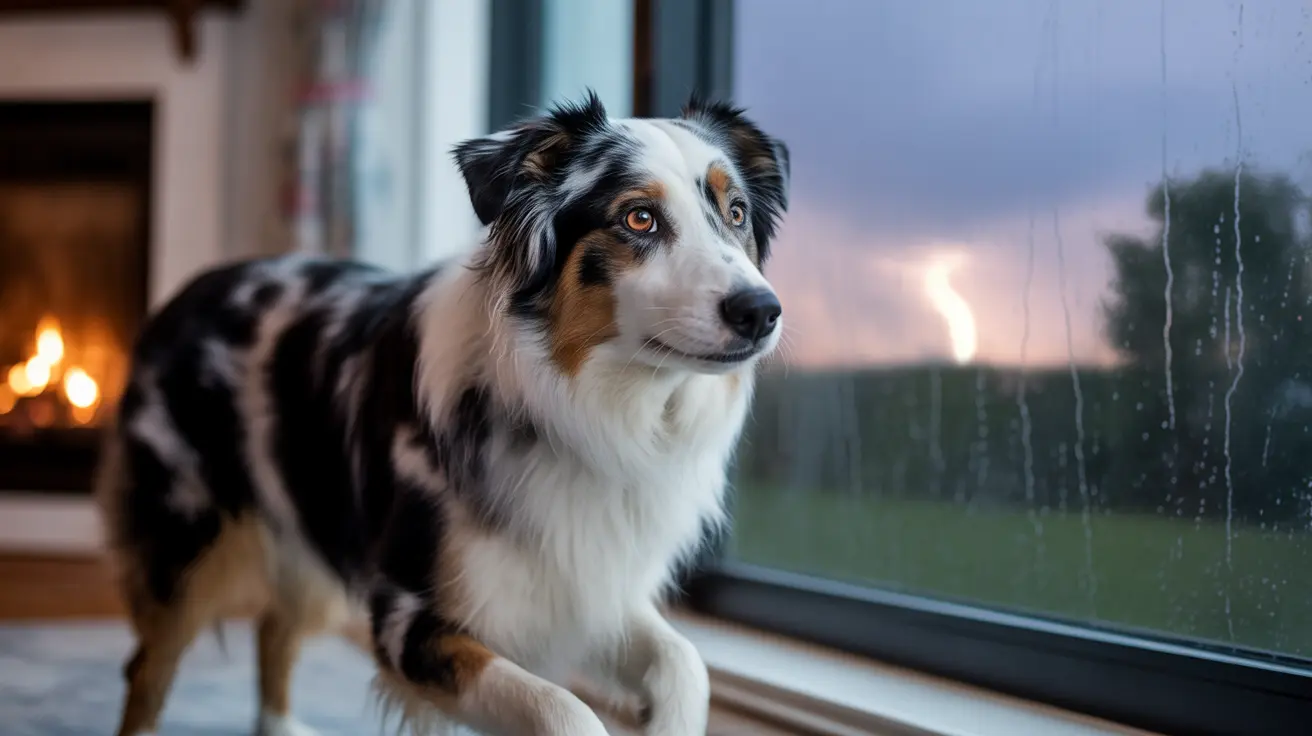Common Causes of Dog Pacing and Strange Behavior
Anxiety and Stress
Anxiety is one of the most frequent causes of pacing in dogs. Whether triggered by thunderstorms, fireworks, separation from owners, or changes in routine, anxious dogs often display restless behavior accompanied by whining, excessive panting, and hiding.
Environmental stressors such as new pets, visitors, or moving to a new home can also trigger anxiety-related pacing. Dogs with past trauma may be particularly susceptible to stress-induced behavioral changes.
Medical Conditions and Pain
Physical discomfort often manifests as restlessness and pacing. Senior dogs with arthritis may pace because they struggle to find a comfortable position to rest. Other medical causes include:
- Joint inflammation or injury
- Gastrointestinal issues
- Urinary tract infections
- Internal pain or discomfort
- Neurological conditions
Cognitive Dysfunction in Senior Dogs
Older dogs may develop canine cognitive dysfunction (dog dementia), which frequently causes pacing, especially at night. This condition can also lead to:
- Disorientation
- Changes in sleep patterns
- Increased vocalization
- House soiling
- Altered interaction with family members
Emergency Warning Signs
Some pacing behaviors warrant immediate veterinary attention, particularly when accompanied by:
- Excessive drooling or panting
- Bloated or distended abdomen
- Collapse or weakness
- Vomiting or diarrhea
- Signs of severe pain
- Neurological symptoms like head tilting or circling
When to Call Your Veterinarian
Contact your vet immediately if your dog's pacing is accompanied by any emergency warning signs or if the behavior is sudden and severe. Even if the pacing seems mild, persistent unusual behavior should be evaluated by a professional to rule out serious conditions.
Treatment and Management Strategies
Addressing Anxiety
For anxiety-related pacing, consider these solutions:
- Create a calm, safe space
- Use anxiety wraps or thundershirts
- Consider pheromone diffusers
- Maintain consistent daily routines
- Consult with a behaviorist for severe cases
Managing Medical Conditions
Treatment depends on the underlying cause but may include:
- Pain management medications
- Anti-inflammatory drugs
- Specific treatments for diagnosed conditions
- Dietary changes
- Environmental modifications
Frequently Asked Questions
Why is my dog pacing and acting weird during thunderstorms or fireworks?
Dogs often pace during storms or fireworks due to anxiety triggered by loud noises and pressure changes. This natural stress response can be managed through creating safe spaces, using anxiety wraps, and behavior modification techniques.
Could my dog's pacing be a sign of anxiety or separation stress?
Yes, pacing is a common sign of anxiety and separation stress in dogs. Other indicators include whining, excessive drooling, destructive behavior, and house soiling when left alone.
When should I worry if my dog is pacing along with panting or vomiting?
These combined symptoms could indicate serious conditions like bloat, poisoning, or organ dysfunction. Seek immediate veterinary care, as these signs may represent a medical emergency.
How can I help my dog stop pacing caused by pain or cognitive dysfunction?
Work with your veterinarian to develop a treatment plan that may include pain medication, environmental modifications, and cognitive support supplements. Maintaining routine and providing comfortable resting areas can also help.
What medical conditions can cause sudden pacing and unusual behavior in dogs?
Various medical conditions can cause sudden pacing, including neurological disorders, endocrine diseases like Cushing's, pain from injuries or arthritis, gastrointestinal issues, and cognitive dysfunction in senior dogs.
Conclusion
While dog pacing and unusual behavior can be concerning, understanding the potential causes and recognizing emergency warning signs helps you make informed decisions about your pet's care. Always consult with your veterinarian when you notice significant changes in your dog's behavior, especially if accompanied by other concerning symptoms.






